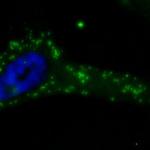Senator John McCain's (R-AZ) office just released the following statement with regard to his current clinical status while battling an aggressive form of brain cancer known as Glioblastoma (aka GBM).
chemotherapy
As if having cancer were not enough to worry about, people undergoing chemotherapy need to keep bacterial infections in the forefront of their concerns at all times.
Sadly, a woman’s tragic story-- recently all over the news-- plays out in the real world more often than people may r
Given modern medical advances extending survival rates for chronic diseases like cancer along with the population aging at an exponential rate, companies are seeing opportunities for niche markets.
Senator John McCain’s office just released a statement from the Mayo Clinic Hospital in Phoenix detailing his newly diagnosed Glio
Let's call progress against cancer a mixed bag. Until 20 years ago, chemotherapy drugs — poisons that kill or stop the division of cells— have been the mainstay of cancer treatment.
You may have noticed a number of headlines referencing the “Tree Man” from Bangladesh with claims he is “cured” after 16 operations for his rare genetic disorder that transformed his hands and feet into bark-like warts and cutaneous horns.
I hope you enjoyed Part I of the "Brain Tumors: Fact vs. Fiction" series.
Beau Biden, son of Vice President Joe Biden, died from brain cancer. As did Senator Edward “Ted” Kennedy. Brittany Maynard - suffering from a terminal type - became widely known for fighting for her right-to-die.











